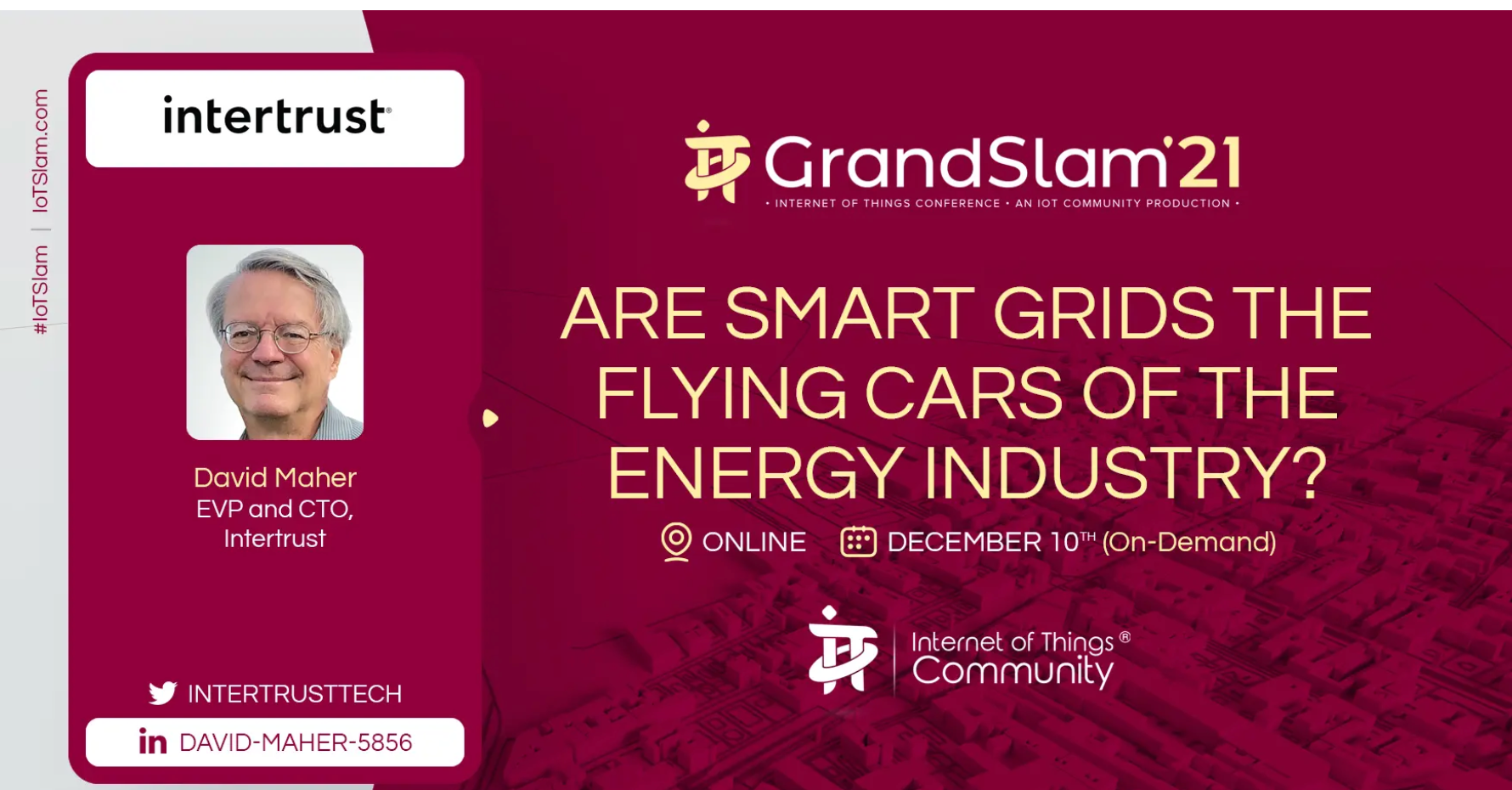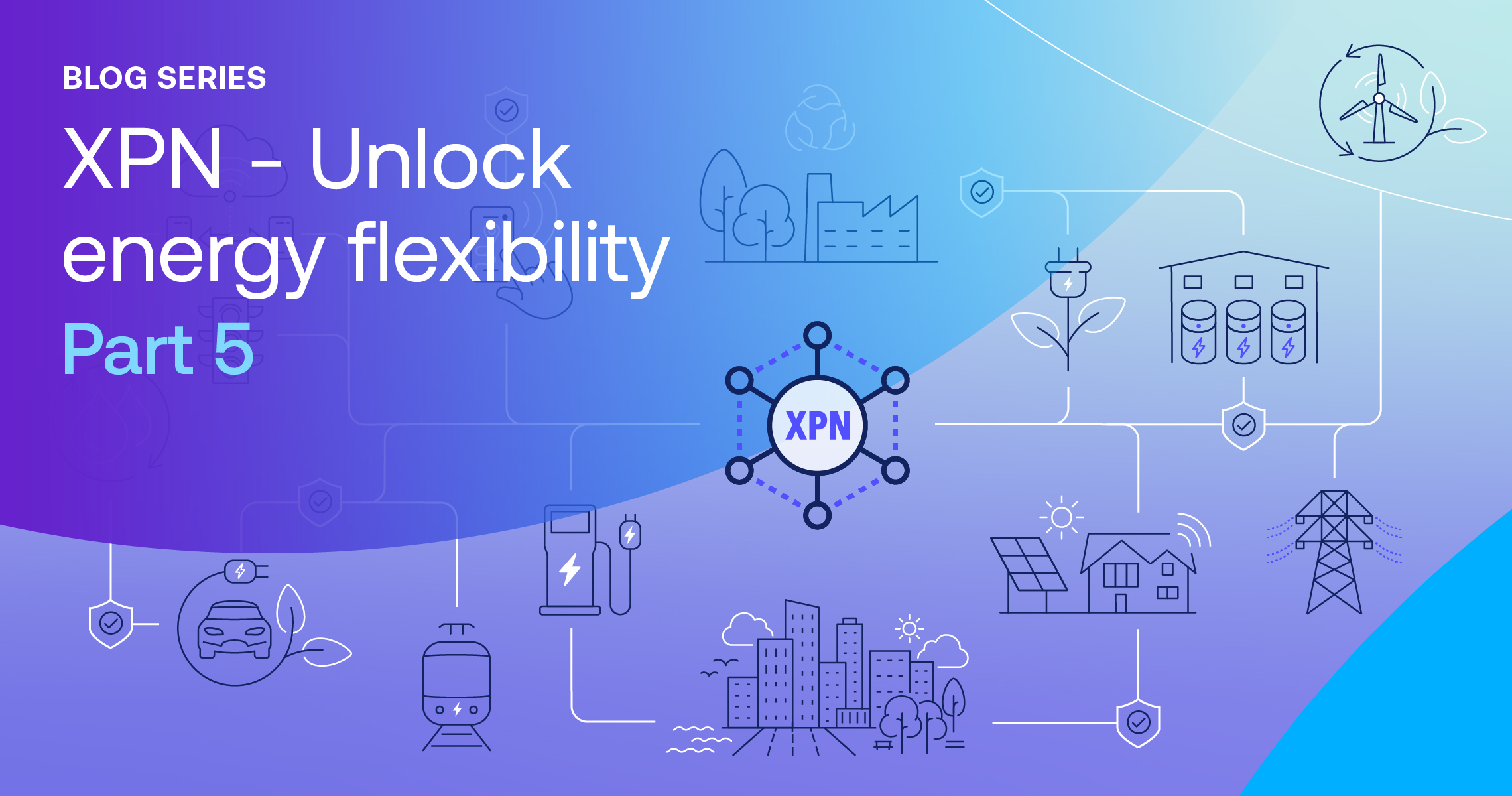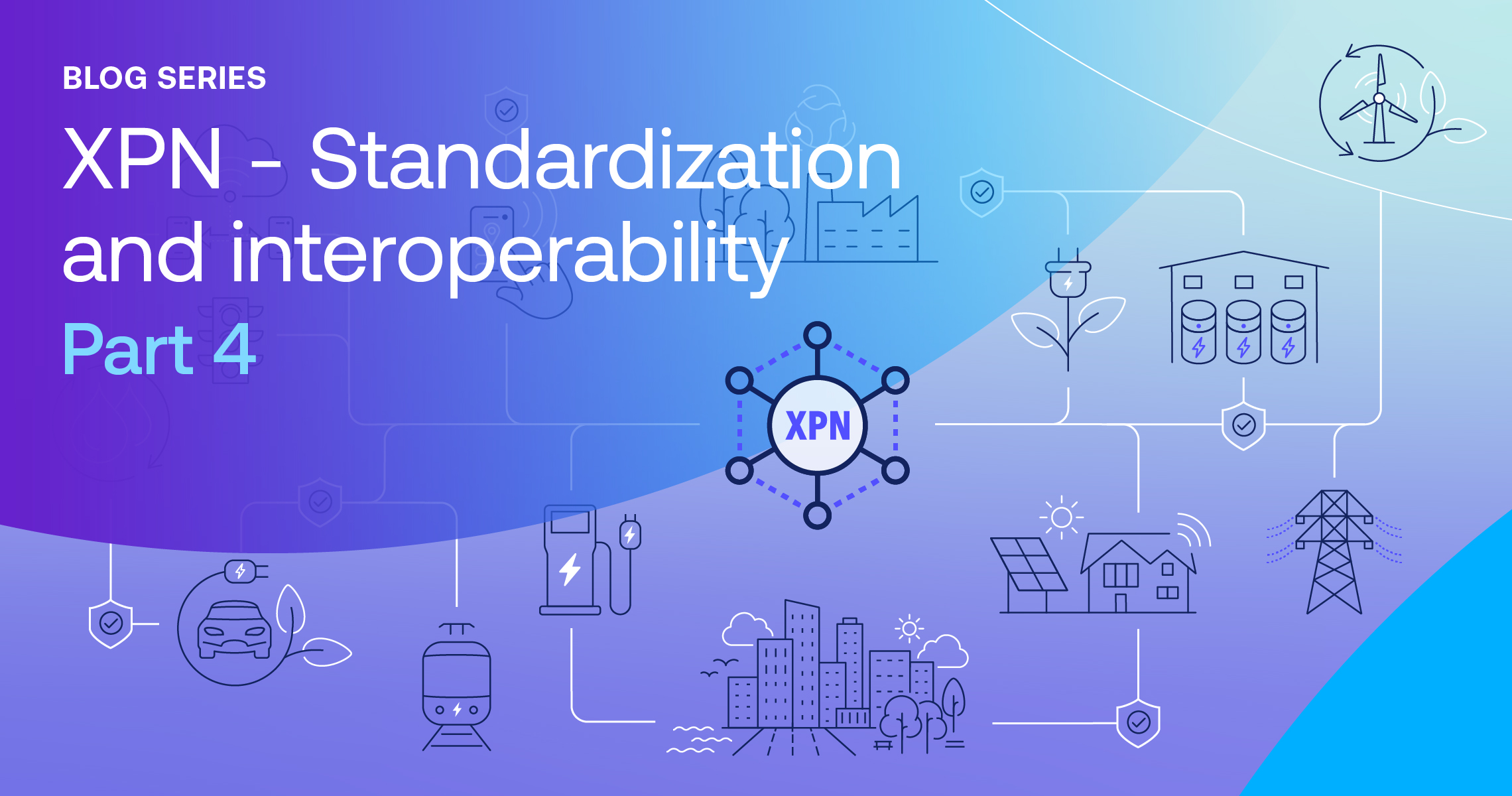Technologists have promised us flying cars for well over 100 years. And while air mobility is no longer the stuff of science fiction, we’ll probably be waiting a bit longer before we’re commuting to work George Jetson style. Similarly, we started hearing about smart grids in the 1970s, and while there is an abundance of technology, and some progress has been made, we are far from the point where smart grids will enable the most important result: decarbonization through effective implementation of renewable energy resources.
Intertrust recently became a gold-level corporate member of The Internet of Things Community® (IoT Community®), the world’s largest and longest standing CxO community of senior business leaders and IoT practitioners. We’re excited to share industry learnings and best practices on security, privacy, and trust in IoT. Later on this week, I will be giving a virtual keynote at the IoT Grand Slam® Internet of Things 2021 conference on this topic: are smart grids the flying cars of the energy industry?
Decarbonization and smart grids
So can smart grids enable decarbonization? This application will challenge both consumer and Industrial IoT. Such a feat requires massive scale, and broad investment in the deployment of distributed energy resources including smart loads, smart storage, and renewables. To quickly accomplish this at scale, we’ll require market power whereby those who invest in the deployment of, say, grid scale storage, have an immediate market for storage services, and wind and solar system operators can find immediate customers to balance their peak supplies.
However, the U.S. power grid is the largest machine in the world, and one of the most fragile. Moving from a hierarchically controlled system to a hyperconnected cyber-physical market-driven system with precise, instantaneous supply and demand synchronization will require a tour-de-force of secure system science. We don’t have flying cars because they require a safe, secure 3D smart transportation infrastructure. Likewise, we won’t have smart grids until we have a truly secure, trustworthy decentralized infrastructure for IoT devices that will allow many resources to be safely, optimally and immediately used when they come online, protected from nefarious actors. We can wait longer for flying cars, but we can’t wait for the secure smart grids we need to save the planet.
The security infrastructure for smart grids that enables reliable, fluid, low-latency, and automated market mechanisms will include: Network independent, explicit private networks; advanced, attribute-based identity management; and authenticated and authoritative mechanisms for data and control. IoT devices will need to pair with digital twins so that the operative devices remain simple, focused, and responsive. Their twins can employ AI mechanisms that detect and share anomalies and threats, continually upgrade device security, and employ self-healing strategies. Finally, we need a responsive, distributed trust management infrastructure that authenticates attributes of devices, services, data feeds, and software components.
I talk about these issues, and more, in my virtual keynote for the IoT Slam conference. Watch it on-demand here.




